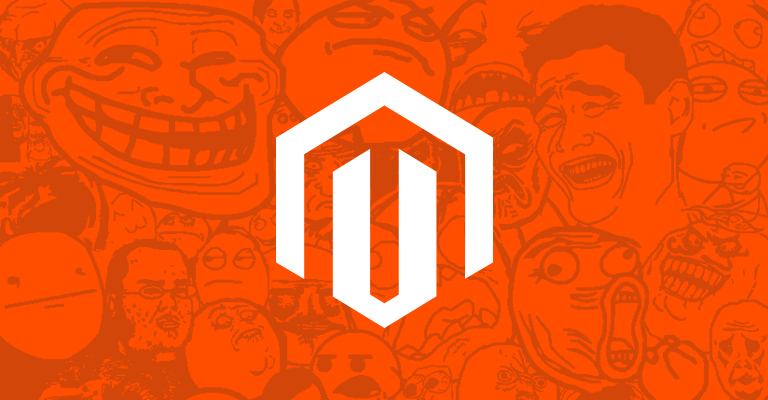
Who still uses Joomla?
Is Joomla still relevant today? Who are the core users of Joomla in this modern web development world? Are there significant reasons to choose Joomla over other content management systems? These are thought-provoking questions that come up as we delve into the current users and relevance of Joomla.
The main problem lies in the fact that Joomla is not evolving as rapidly as its counterparts, WordPress and Drupal. From the data of W3Techs, as of 2021, Joomla’s usage statistics have seen a slight decrease, holding only a 2.8% share of the CMS market, while WordPress boasts a whopping 64.8%. Supporting this, another report from BuiltWith suggests the same trend, showing Joomla’s popularity as the fourth within the top 1 million sites. Several surveys conducted in the USA also suggest a similar scenario. However, this also provides a great opportunity to bring Joomla back into the game through innovative solutions and initiatives.
In this article, You will learn about the various aspects of Joomla and its usage. We will delve deep into the reasons behind Joomla’s decreasing popularity and also provide insights into its current user demographics. We will discuss in detail the surveys that have been conducted in the USA regarding Joomla’s usage and why most people seemingly prefer other content management systems.
In addition to this, the article will explore potential solutions that could influence an increase in Joomla’s usage and bring it on par with its competitors. By understanding the strengths and weaknesses of Joomla, we can brainstorm potential ways to make it more appealing to a wider audience. These innovative solutions, we believe, will shed light on Joomla’s future in the web development industry.
Definitions and Understandings about Joomla Users
Joomla is a popular open-source content management system that allows users to develop and manage websites. From personal blogs to corporate websites and portals, Joomla’s highly customizable nature makes it a widely favored tool. Despite the emergence of other platforms such as WordPress and Drupal, many webmasters, businesses, and organizations worldwide still use Joomla, valuing its extensive range of features and its balance between flexibility and user-friendliness. Joomla is also frequently chosen by users with more technical knowledge or specific website requirements, including e-commerce, social networking, inventory control systems, and more complex business-related needs.
Joomla: The Unsung Hero in a World of WordPress and Shopify
The Relevance of Joomla in the Modern Content Management System Landscape
Despite the dominance of WordPress and Shopify in the world of content management systems (CMSs), Joomla continues to hold its own. This is a testament to its robust features and versatile functionality that have kept a loyal user base for over a decade. While it may not boast the same popularity as its aforementioned counterparts, Joomla’s use today in various businesses and industries should not be underestimated.
Joomla is particularly favoured by developers in need of a CMS capable of delivering complex websites to large-scale companies. It’s often the CMS of choice for social networking websites and e-commerce, favoured for its ability to handle large volumes of content while maintaining speed and efficiency. It offers excellent security features, such as two-factor authentication and extensive access control levels, making it suitable for sensitive sectors like government and education.
Joomla’s Unique Advantages Over Other Platforms
Joomla offers a balance of power, flexibility, and ease of use that sets it apart from other CMS platforms. Notably, Joomla is renowned for its extensive functionality right out of the box, with minimal need for plugins or custom development. This allows users to create robust websites quickly and efficiently, making Joomla an attractive choice for businesses.
Moreover, Joomla’s community and marketplace also provides users with thousands of tailor-made extensions, answering nearly any functionality request a website might need. These extensions range from SEO, social media, backup, security, performance, e-commerce, images, structure, and navigation, giving a Joomla-based site an edge in terms of diverse functionality.
Now let’s take a look at some businesses still using Joomla:
- Holiday Inn: The multinational hotel chain uses Joomla for its high traffic websites, reiterating Joomla’s capacity to handle large-scale operations.
- HighCharts: This international software company that develops interactive charts for websites uses Joomla to power its dynamic website.
- Citibank Malaysia: This branch of the Citibank global bank operates its online presence using Joomla.
Joomla, in the eyes of developers and programmers, certainly holds its own against more popular CMSs like WordPress and Shopify. It offers unique advantages like a robust, secure framework and an array of extensions that make it a flexible choice for many. So, while it might not be making headlines, Joomla continues to be an unsung hero in the CMS world.
Fighting the Stereotype: Diverse Industries Today Relying on Joomla
The Unanticipated Existence
Is it not surprising that Joomla, a content management system, once a leader and now termed as an ‘outdated platform,’ is still being used and is prospering in unexpected places? This may sound unbelievable, yet it’s happening. The platform is living a thriving existence in places less explored, less known. It’s intriguing indeed, but there’s a reason behind this unexpected popularity of Joomla.
Many regions around the globe still lag behind in terms of access to high-speed internet. These are the places where cutting edge, cloud-based CMS solutions often fail, due to high latency or low bandwidth. It’s in these regions where Joomla comes into the picture. It works off an efficient framework that is less reliant on fast internet speed, hence, it works perfectly well. The user interface, despite being less flashy compared to the modern CMS platforms, is sophisticated and user-friendly, which works well with the residents who are yet to get fully acquainted with advanced digital operations.
Overcoming The Unseen Challenges
One of the major hurdles these regions face is the lack of access to cutting-edge technological advancements. It’s the reason why modern CMS platforms, that often demand high-speed internet connectivity, fail to make a significant impact. In contrast, Joomla’s efficient coding and sparse usage of heavy multimedia elements result in faster loading sites, even with low internet speed.
Another struggle in these areas is the unfamiliarity with the latest digital technology. The flashy and advanced interface of modern CMS platforms can prove overwhelming for users who are yet to get the hang of digital procedures. Joomla, despite its overall simplicity, offers a streamlined and user-friendly interface which strikes the right chord with the users.
The Successful Template: Joomla in Action
One prime example of Joomla’s incredible impact is its use in certain African territories. Here, the scarcity of high-speed internet access and lack of acquaintance with advanced digital operations contribute to the failure of modern CMS platforms. But, Joomla, with its efficient framework and simplified operation, has carved a niche.
Another instance is the extensive use of Joomla in isolated parts of India. Despite the burgeoning growth of digital technology, internet speed remains an issue in these areas. Joomla has been instrumental in providing an easy-to-use digital platform that functions efficiently even without high-speed internet.
In a nutshell, Joomla is finding a lifeline in places where cutting-edge technological advancements are yet to fully penetrate. It is serving the needs of the users perfectly and keeping them connected with the digital world. It’s indeed an unexpected zone of operation for Joomla, but it’s thriving and fulfilling a need that most modern CMS platforms failed to do.
Dare to be Different: Professionals Who Swear by Joomla Despite Other CMS Giants
The Undying Dedication to Joomla
Why are there still a persistent number of users who refuse to abandon Joomla? When Joomla hit the stage, it instantly revolutionized the web design scene. Released in 2005, it was one of the first open-source content management systems, allowing even users with little to no prior coding knowledge to create impressive, professional-level websites. Companies big and small, as well as individual tech enthusiasts, were quick to embrace this promising new tool. Although new technologies and platforms have emerged since, a singular, devoted group has remained thoroughly entranced by Joomla’s simplicity and versatility. These loyalists represent a fascinating case study into the enduring charm of a legacy software system.
The Obscure Dilemma
Despite its vast potential and merits, Joomla has been cast into the shadows by more new-age options such as WordPress and Shopify. The undeniable allure of these phenomenally popular platforms stems from their highly intuitive interface accompanied by substantial global support. These platforms are fueled by a zealous innovative spirit that emphasizes ease-of-use and seamless integration with various third-party applications. Consequently, Joomla is often branded as antiquated, restrictive, and having a steep learning curve. As a result, new users are deterred, and some existing aficionados transition, leaving Joomla in an apparent quandary.
Exemplary Endeavours Harnessing The Joomla Potential
Despite the perceived hurdles, there are compelling instances of Joomla thriving in practice. The Harvard University Graduate School of Arts and Sciences and Guggenheim are among noteworthy advocates. The former utilizes Joomla’s comprehensive user management system to manage hundreds of user groups and access levels effectively. The latter exploits Joomla’s extensive extension library to enhance website functionality. Such organizations appreciate Joomla’s open-source nature, which allows them to tailor their sites to exact specifications without falling prey to proprietary limitations. Additionally, the Joomla extensions directory boasts over 8,000 extensions, featuring everything from e-commerce solutions to interactive galleries, leaving few reasons to seek alternatives.
A fascinating community initiative, Joomla Australia, meanwhile, serves as a robust support network for Australian Joomla users. They host regular meetups, organize workshops, and offer comprehensive online resources. This initiative demonstrates how Joomla’s open-source philosophy extends beyond software to foster a vibrant, supportive community.
Likewise, Linux.com, a high-traffic site advocating Open Source, demonstrates Joomla’s prowess in managing large-scale content. Their extensively categorized and segmented content can be navigated with ease, thanks to Joomla’s sophisticated categorizing system.
Examples like these underline the enduring appeal of Joomla. It is not a question of being outdated or non-intuitive; it is about understanding and harnessing its inherent, unmatched potential.
Conclusion
Can we truly ignore the importance of Joomla in the contemporary world? At this juncture, it is increasingly spectacular to note the discernable number of users still applying this content management system and how it exceptionally fulfills their individual needs. The continuous reign of Joomla not only aligns with its versatility but also the mastery it has displayed over time in an evolving internet era, therefore its relevance cannot be overemphasized. Conclusively, Joomla remains an outstanding CMS choice for many and its longevity speaks volumes about its functionality, integrity, and usefulness.
Furthermore, we sincerely implore our esteemed readers to remain connected to our blog for more insights, revelations, and edifying content. We exist to bring you timely and quality updates on your favorite topics and also help you navigate absorption of information in the always evolving technology orb. We promise to keep broadening your horizon regarding your preferred topics, so keep an eye on our page for additional knowledge that can qualitatively influence your understanding.
Finally, calmly anticipate the marvelous articles we have in the pipeline just for you. Brace for informative, impactful, compelling, and transformative information to keep you up-to-date with trends and beneficial insights. Remember, the knowledge you seek is not far fetch; it merely awaits your click. So, stay tuned, keep your expectations high, as we promise to exceed them consistently. After all, knowledge is power, and we are here to empower you.
F.A.Q.
FAQ
1. What is Joomla?
Joomla is a popular open-source content management system used for building websites. It offers extensive features and customizability, making it a favorite among web developers and administrators.
2. Who are the typical users of Joomla?
Joomla is typically used by individuals and organizations that need a powerful, flexible platform for managing their website content. This includes small businesses, educational institutions, non-profits, and even multinational corporations.
3. Why do some people still use Joomla?
Some people still prefer using Joomla due to its high levels of customization, diverse range of extensions, and robust security. In addition, Joomla’s strong user community is often cited as a supportive resource.
4. What industries often use Joomla?
Joomla is popular in a variety of industries including education, e-commerce, business, non-profits, among others. It’s flexibility in design and functionality is appreciated by both tech-savvy individuals and non-tech users.
5. Are there any notable websites that use Joomla?
Yes, numerous high-profile websites use Joomla. These include the websites of Harvard University, the Guggenheim Museum, and the United Nations Regional Information Centre.













